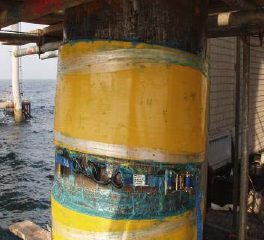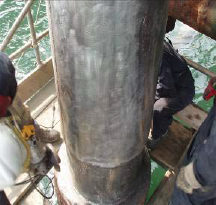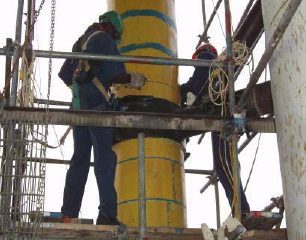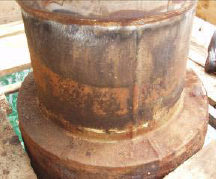United States
Pipe Details
- A 12-inch (305-mm) carbon steel pipe transporting harsh chemicals suffered a pinhole leak caused by internal corrosion
- 43° C (109.4° F) Operating Temperature
- 148 C (298.4° F) Design Temperature
- -5° C (23° F) Ambient Temperature During Installation
Summary
- Internal corrosion caused a pinhole leak on a 12-inch (305-mm) carbon steel pipe transporting harsh chemicals
- 4 layers of axial strips of carbon fiber were applied over 18 inches (46 cm) to repair the nozzle
- 2 technicians completed the repair in less than 1 hour
- No hot work was required
- No negative environmental impact
- tive impact on refinery operations
- Solution enabled additional 4 years of safe service.
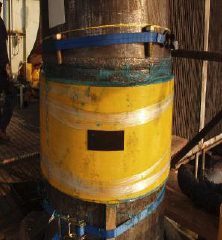
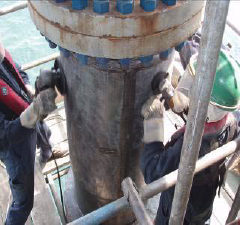
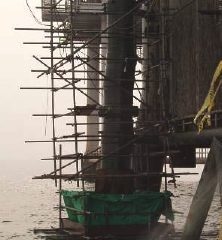
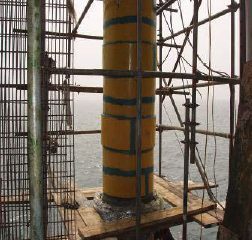
Risers on an oil platform offshore Africa had sustained corrosion damage and needed repair along a section of pipe that had been welded, producing a surface that was not aligned. CSNRI had to contend with alignment and weld bridges in the course of addressing corrosion concerns.
A CSNRI trained and certified team began this complex project by positioning a clamp at the +10 riser location, which was required before the weld bridge could be created. A steel sleeve repair had been welded previously, creating two diameters at this point in the riser. While the differing diameters needed to be addressed, they would pose no impediment to the eventual installation of the Clock Spring repair.
The installation team used 7-inch (178-mm) grinding machines fitted with wire wheels to prepare large surface areas and 4-inch (102-mm) machines for the welds and areas that were more difficult to access. The surfaces were cleaned to a NACE 3 standard, producing a clean white metal surface with all contaminants removed. With the surface prepared, the riser was ready for Clock Spring repairs both above and below the welded steel sleeve.
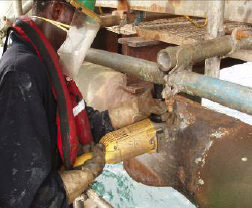
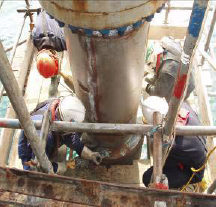
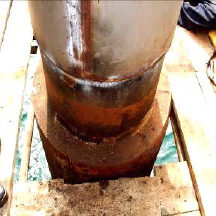
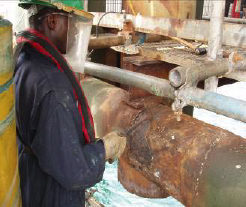
During the complete installation process, the flanges were covered to prevent adhesive from falling into the flange web and bolts, which saved time in the final cleaning process.
Because there was no clamp in place at the +10 level, positioning and welding the new clamp was a straightforward process once the team prepared the severely corroded support structure so the doubler plate could be installed to reinforce the column and prevent panel zone shear failure. With the surface prepared, the team welded the clamp and tightened the holding bolts.
The clamp at the +25 level presented a different set of challenges. The existing clamp could not be removed until the new clamp was installed because removal would compromise the riser’s stability.
The repair team prepared the surface above and below the existing clamp to a NACE 3 standard, then installed a Clock Spring repair sleeve above the existing support. Because welding was not possible at the time, the clamp remained open until it could be fully welded in place. Although the clamp was not completely installed, it would not impede the Clock Spring installation. Once the welding was completed, the bolts were tightened, the 45-degree structural support was welded in position, and the existing clamp removed. This sequence of activities prevented undue weight on the riser.
There were two distinct deviations from the perpendicular because of the way the riser was constructed, with a maximum deviation on the extrados of 4 inches (102 mm). The riser was marked with a dry Clock Spring wrap to allow an onsite supervisor to assess the best position for the installation. Once the position was marked, the installation team put a support mechanism in place to prevent the Clock Spring wrap from slipping before the cure was complete.
With the second Clock Spring installed, the gap between them was ready to be filled. The installation team applied filler over the two welds and affixed the molds, tightening them to force the filler into the natural circumference of the pipe. When the mold was removed, installers sanded the cured filler and refilled the voids, allowing the new filler to cure. This created a new surface that would allow the Clock Spring to be installed without voids and cavities. This precaution allowed the Clock Spring to keep its hoop stress.
With the two weld bridges completed, the final stage of the Clock Spring installation was carried out. The team cleaned the Clock Spring in readiness for the corrosion coating and applied primer to the joints on the repair sleeve, allowing it to cure before applying the final coating. The flanges and both clamps also were coated to create a fully coated finished surface.
